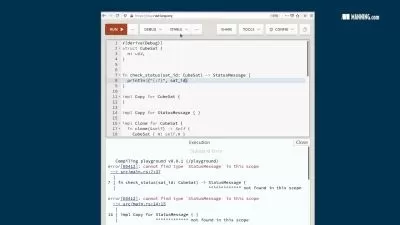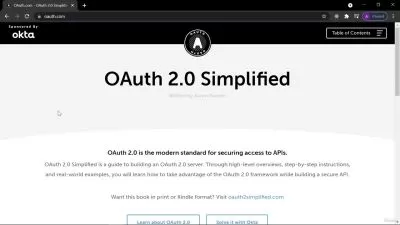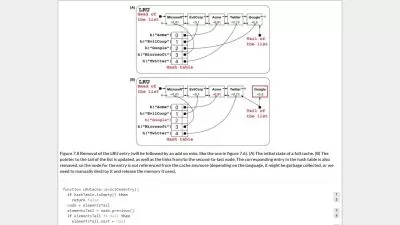Erlang Masterclass: Concurrency and the OTP
Daniel Hjerpe
2:31:44
Description
Master concurrency and the OTP
What You'll Learn?
- Erlang
- Parallell programming
- Concurrency
- OTP
- Functional programming
- BEAM
- Design patterns
- Clients and servers
Who is this for?
What You Need to Know?
More details
DescriptionYou have probably heard about WhatsApp by now. And you might also have heard that it handles a fair amount of users each day. In fact, they managed to grow their user base to millons of users with an engineering team of only 32 persons using Erlang, before being acquired by Facebook. But WhatsApp is not the only success story. You would be surprised if you knew how many of the things you take for granted in your daily life are in fact powered by Erlang. It all started with the telecom business, but Erlang has since then gained popularity in many areas, including fintech, IoT, Healthcare and gaming. Just to name a few!
There are two main paradigms of the Erlang language. The functional paradigm, and the concurrent paradigm. In this course, we will put our focus on the concurrent part of Erlang. Not only will we talk about concurrency, parallelism and design patterns. We will also talk about the OTP, supervisors, and how we can make our programs truly fault tolerant.
If you are new to the language, I suggest you start with my other course, which will lay the foundation for this one, and provide you with all the tools you need.
So, if any of this sounds interesting to you, give it a try and tell me what you think.
Who this course is for:
- Programmers with basic Erlang knowledge ready to step up
- Programmers learning about concurrency and parallelism
- Programmers learning about client/server behaviors
You have probably heard about WhatsApp by now. And you might also have heard that it handles a fair amount of users each day. In fact, they managed to grow their user base to millons of users with an engineering team of only 32 persons using Erlang, before being acquired by Facebook. But WhatsApp is not the only success story. You would be surprised if you knew how many of the things you take for granted in your daily life are in fact powered by Erlang. It all started with the telecom business, but Erlang has since then gained popularity in many areas, including fintech, IoT, Healthcare and gaming. Just to name a few!
There are two main paradigms of the Erlang language. The functional paradigm, and the concurrent paradigm. In this course, we will put our focus on the concurrent part of Erlang. Not only will we talk about concurrency, parallelism and design patterns. We will also talk about the OTP, supervisors, and how we can make our programs truly fault tolerant.
If you are new to the language, I suggest you start with my other course, which will lay the foundation for this one, and provide you with all the tools you need.
So, if any of this sounds interesting to you, give it a try and tell me what you think.
Who this course is for:
- Programmers with basic Erlang knowledge ready to step up
- Programmers learning about concurrency and parallelism
- Programmers learning about client/server behaviors
User Reviews
Rating
Daniel Hjerpe
Instructor's Courses
Udemy
View courses Udemy- language english
- Training sessions 27
- duration 2:31:44
- Release Date 2024/01/04








